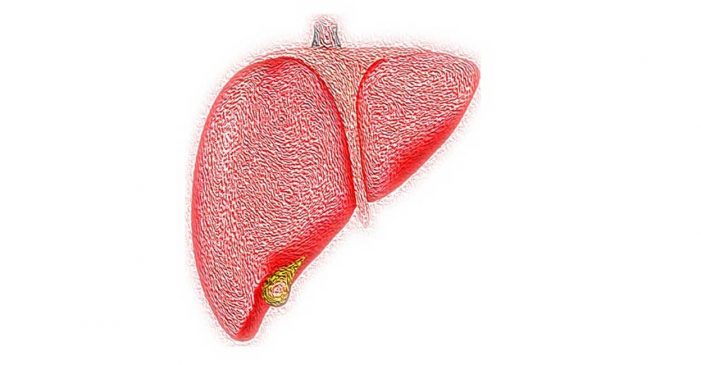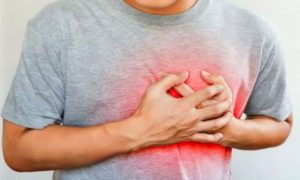Steatotic liver disease means excessive fat accumulation in the liver. Here are symptoms, risk factors and prevention of this non-alcoholic fatty liver disease
A move is currently underway to change the name non-alcoholic fatty liver disease to metabolic dysfunction-associated steatotic liver disease (MASLD) where health experts also have recommended changing the name nonalcoholic steatohepatitis to metabolic dysfunction-associated steatohepatitis (MASH). Steatosis is a medical term for fat accumulation hence, steatotic liver disease means excessive fat accumulation in the liver and SLD is the new pandemic.
Prevalence of SLD ranges from 30-40% across the globe while in India, the prevalence is 31-38% across various studies. Among diabetics, its prevalence is higher than this.
Read More: Silent signals: Know unseen signs and symptoms of cancer for swift detection
Causes:
In an interview with HT Lifestyle, Dr Adarsh CK, Chief Consultant Gastroenterologist and Hepatologist at Gleneagles BGS Hospital, shared, “Causes/ risk factors for SLD apart from alcohol are diabetes, overweight/ obesity, thyroid dysfunction, high cholesterol/ triglyceride levels, hypertension, sedentary lifestyle, bad food habits (excessive sweet/ oil consumption), certain drugs, and some genetic diseases.”
Bringing his expertise to the same, Dr B V Sriram, DM Gastroenterology at Manipal Hospitals in Goa, said, “Experts don’t know exactly why fat builds up in some livers and not others. They also don’t fully understand why some fatty livers turn into NASH.” According to him, NAFLD and NASH are both linked to the following:
- Genetics
- Overweight or obesity
- Insulin resistance, which happens when your cells don’t take up sugar in response to the hormone insulin
- Type 2 diabetes, sometimes called high blood sugar or hyperglycemia
- High levels of fats, especially triglycerides, in the blood.
These combined health problems may contribute to a fatty liver. However, some people get NAFLD even if they do not have any risk factors.
Read More: Low intensity exercise linked to reduced depression: Research
Symptoms:
Dr Adarsh CK revealed, “Uncomplicated fatty liver disease is usually asymptomatic or sometimes they present with abdominal discomfort or fatigue. However, once they end up with cirrhosis, they may present with abdominal pain, jaundice, swelling of legs and abdomen, blood vomiting or black stools, altered behaviour, weight loss, and others.”
Dr B V Sriram, stated that SLD often has no symptoms but when it does, it may include:
- Fatigue
2. Not feeling well, or malaise
3. Pain or discomfort in the upper right belly area
Risk factors:
Dr B V Sriram highlighted that many diseases and health problems can increase your risk of NAFLD, including:
- Family history of fatty liver disease or obesity
- Growth hormone deficiency, which means the body doesn’t make enough hormones to grow
- High cholesterol
- High levels of triglycerides in the blood
- Insulin resistance
- Metabolic syndrome
- Obesity, especially when fat is centered in the waist
- Polycystic ovary syndrome
- Obstructive sleep apnea
- Type 2 diabetes hypothyroidism
- Hypopituitarism
Read More: Good Digestion Is Equal To Good Health: 7 Ayurvedic Tips To Stay Fit
What are the complications?
Dr Adarsh CK said, “Nearly 10-20% of SLD patients can develop fibrosis in the liver and finally end up in a condition called as cirrhosis of the liver, which is irreversible. Some of them can progress to develop liver cancer as well. If SLD can be picked up early and monitored, these complications can be prevented, and fatty liver is reversible.”
Dr B V Sriram cautioned that if nothing is done to stop the scarring, cirrhosis can lead to several complications:
- Fluid buildup in the stomach area, called ascites
- Swollen veins in your esophagus, or esophageal varices, which can rupture and bleed
- Confusion, sleepiness and slurred speech, also called hepatic encephalopathy
- Overactive spleen, or hypersplenism, which can cause too few blood platelets
- Liver cancer
- End-stage liver failure, which means the liver has stopped working.
What tests are required? How is it diagnosed?
Dr Adarsh CK answered, “Simple ultrasound can detect fatty liver. Once detected, further tests like liver function tests and fibroscan are also done to look for the severity of fatty liver. Fibroscan is a relatively accurate test for the same and is a non-invasive test. Other blood tests would be done to find out the cause of fatty liver. Rarely, liver biopsy or CT/MRI scans are required.”
Talking about who needs testing for fatty liver, he informed, “All patients with diabetes, hypothyroid, overweight/ obesity, high cholesterol, hypertension, family history of liver disease need testing for fatty liver.”
Prevention and treatment:
To reduce your risk of SLD, Dr B V Sriram suggested:
- Eat a healthy diet that’s rich in fruits, vegetables, whole grains and healthy fats.
- Limit alcohol, simple sugars, and portion sizes. Avoid sugary drinks like soda, sports drinks, juices, and sweet tea. Drinking alcohol can damage your liver and should be avoided or minimised.
- Keep a healthy weight. If you are overweight or obese, work with your health care team to gradually lose weight. If you are a healthy weight, work to keep it by eating a healthy diet and exercising.
- Exercise. Be active most days of the week. Get an OK from your health care team first if you haven’t been exercising regularly.
He added, “Now, with a medical test called ‘Fibroscan’, the extent of fat deposits in the liver and the extent of fibrosis can be diagnosed and reviewed again after three to six months to find out whether the fat levels have increased or decreased.”
As per Dr Adarsh CK, the mainstay of treatment is lifestyle modifications which include:
- Weight loss by calorie restriction (eat 30% less)/ intermittent fasting
- Low sugar with fat compromising <30% of calories
- Exercise 30-45 minutes a day for 5 days a week
- Avoid aerated drinks/junk food
- Yoga
He concluded, “Apart from the above steps, certain medications like vitamin E, Metformin and recently launched drug called saroglitazar may be beneficial. Once there is liver cirrhosis, liver transplant may be the only cure. Since fatty liver in early stages is reversible, early detection with appropriate lifestyle modifications and medications at the right time is the simple mantra for a healthy life.”





































